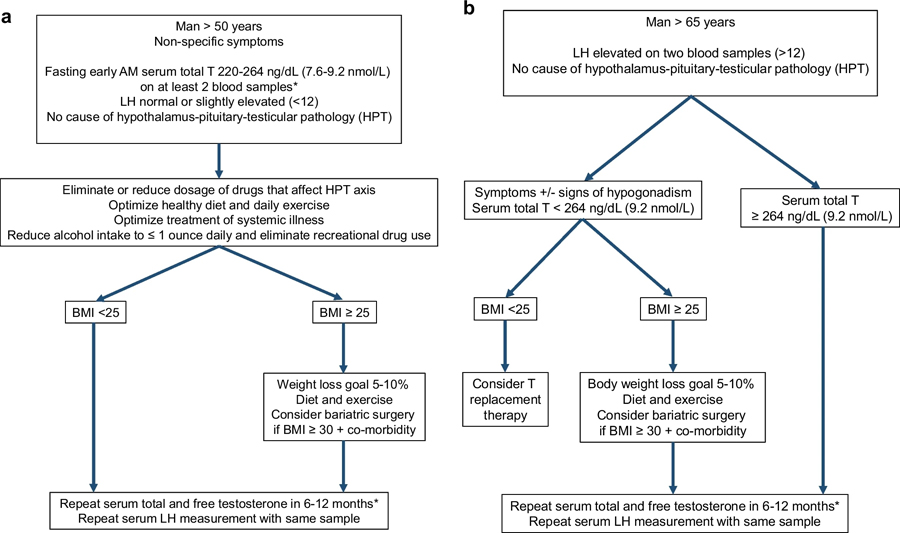Fig. 3.

Management algorithm for biochemical secondary hypogonadism (Fig. 3a), primary hypogonadism (left side of Fig. 3b) and compensated primary hypogonadism (right side of Fig. 3b) in aging men. Biochemical secondary hypogonadism is common in aging men, particularly men > 50 years and BMI ≥ 30. Biochemical secondary hypogonadism associated with obesity is often reversible. Biochemical primary hypogonadism is more common in men > 65 years old, and it is much less commonly reversible than biochemical secondary hypogonadism. Biochemical compensated primary hypogonadism commonly persists with stable, normal serum testosterone concentrations; these men can be followed with annual assessment of serum testosterone concentrations. *An accurate testosterone assay is defined by one that has been validated and harmonized by an accuracy-based, quality control program such as the one established by the United States Center of Disease of Control [73]. The lower limit of a normal serum total testosterone concentration should be 264 ng/dL (9.16 nmol/L) [73].
